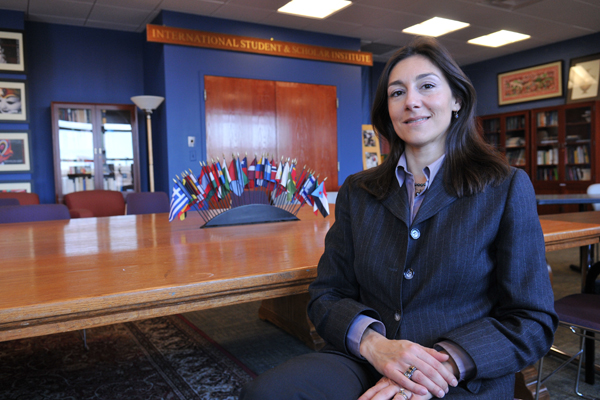3Qs: A closer look at the Turkish protests

Protests have spread across Turkey in recent days, sparked by a massive police reaction to a sit-in by a group to prevent the destruction of Gezi Park in Istanbul that was slated for redevelopment. Since the end of May, the protests have evolved into a nationwide pushback against the administration of Turkish Prime Minister Recep Tayyip Erdogan, a democratically-elected official who opponents say has become increasingly authoritarian. We asked Berna Turam, an associate professor international affairs and sociology who has done extensive ethnographic fieldwork in Turkey, to weigh in on the protests and their broader implications.
Turkey is a country that has historically seen a divide between its Muslim and secular citizens, but this protest has united people across religions, classes, and ethnicities. What is it about this protest that is causing so many Turkish citizens to rally together?
Western observers have mostly paid attention to Turkey’s secular state and pro-Islamic government, which came to power by free and fair elections. But the focus that pits Islam and secularism can often be misleading. The real clash now is no longer religion versus secularism. In the aftermath of a successful integration of pious Muslims into the secular state, the axis of conflict has shifted to authoritarianism versus liberal democracy.
With these protests, it’s become clear that people are aligned not by their religion or secularism, but by their hatred of authoritarianism. And that’s an issue that’s long been simmering in Turkish society, but this most recent protest has brought that to the surface. Nobody is debating Muslim or religious issues or theological matters in these protests. In Turkey, they’re fighting about their freedoms and rights. This issue here is not religion—it’s power.
How do the protests in Turkey compare to other recent demonstrations, like the Arab Spring and the Occupy movement?
Some participants and observers want to call this the “Turkish Spring,” but the only similarity really is that the protesters in Turkey are using urban spaces like Gezi Park in the same was as Egyptians used Tahrir Square or Occupy Wall Street used Zuccotti Park. The centrality of urban space in political contestation has become a primary aspect of world politics. But as those previous protests didn’t come with a cohesive message, it seemed as though protestors failed to articulate their shared agendas and goals. Most urban protests have faded away under pepper gas.
Protests in Turkey may be similar with respect to teargas, but there is also a major difference. These people are protesting authoritarian tendencies of an elected political leader –the freedom violations, freedom of assembly, freedom of expression and speech, press freedom, freedom of lifestyle and so on under his rule. There is no vagueness about the widely shared agenda here. The prime minister, the protesters express, is interfering in people’s lives, civil liberties and rights. But they don’t want to overthrow the government. They want the prime minister to resign, but as Turkey is a democracy with a long history of free and fair elections, any political change is likely to happen through elections.
What is also unique about Turkey, particularly in contrast to the Arab Spring, is that the prime minister was elected successively three times in fair and free elections, only gradually becoming more authoritarian. Most of these protesters are young people facing extreme police brutality and oppression, yet they have remained peaceful, calm and in control in pursuit of their goals.
Your research also examines the Turkish diaspora, looking at neighborhoods like Berlin’s Kreuzberg, which has a significant Turkish populations. How are the protests playing out in places like that?
What I think will be most interesting is seeing how the political dynamics on display in Turkey play out on the streets in Kreuzberg, where some 40 percent of the residents are of Turkish descent. It’s a microcosm of Turkey and of Istanbul, so issues that resonate in the homeland will play out there, as well. Just like we saw Occupy protests spring up in cities around the world, we are seeing protests similar to those which started in Turkey playing out around the globe.
But what is perhaps the most different is that while in Turkey, it is the non-religious non-practicing people who felt most pressured by the government, it is the opposite in Germany and across Europe. While Turkey’s government has been regarded as not so accommodating to non-religious people, in Germany and Europe it’s the opposite of that. European democracies have had the opposite challenge: the accommodation of the Muslim population. We see some of the same issues playing out in Berlin, but in a context that’s dramatically different in the cities, Istanbul and Berlin.





